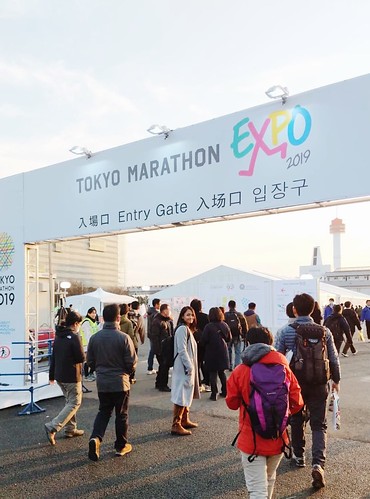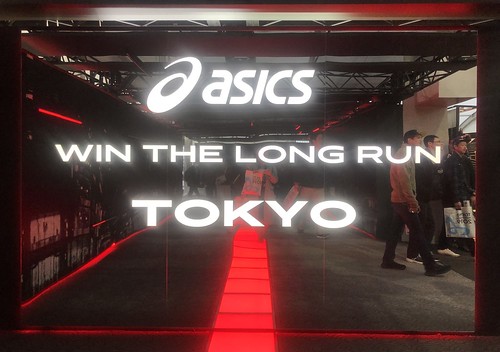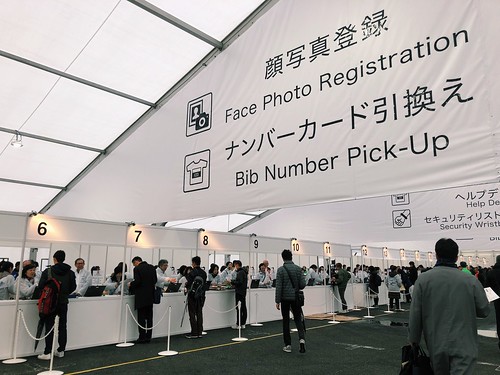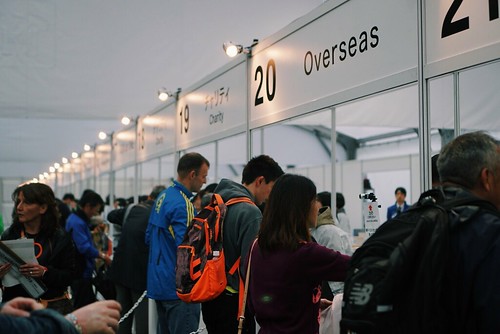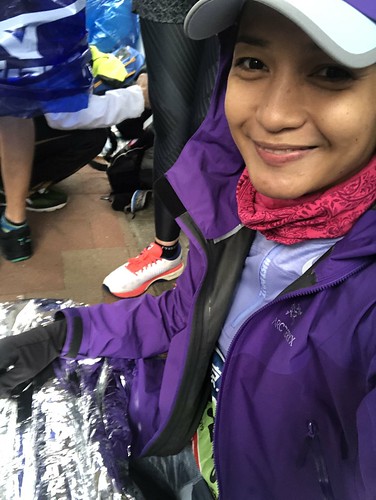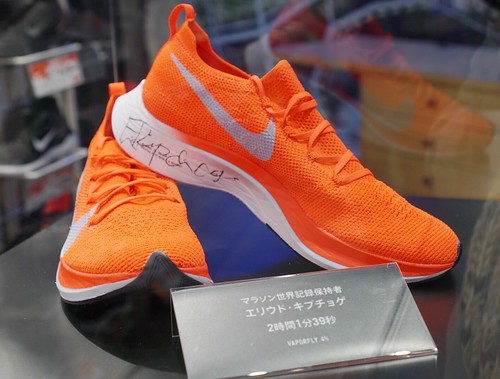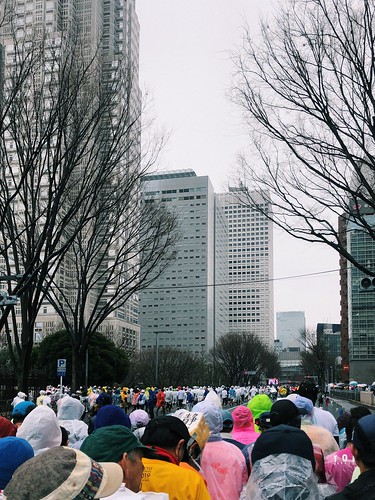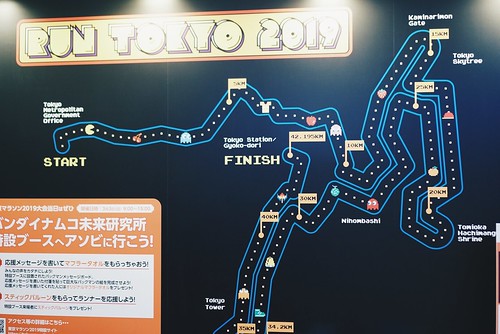
Tokyo Marathon: A First-Timer’s Account
Happy to share that I’ve completed my first marathon during this year’s Tokyo Marathon!
Rain, sweat, thoughts, and feels coming right up.
| Distance | 42.195 KM |
| 1st Marathon | Yes |
| Chip Time | 5:25:32 |
| Gun Time | 5:50:18 |
| Training | 14 out of 18 weeks, Hal Higdon Novice 1 |
| Block | Block L |
| Weather | Average 6º C, very rainy |
| Highlights | Asakusa Gate and Tokyo Skytree 15 KM Shiba Park and Tokyo Tower 38 KM Tokyo Station Finish Line 42 KM Taiko drumline |
View this post on Instagram
Target Finish Times
|
< 5:00:00 |
No |
|
< 5:30:00 |
Yes |
|
< 6:00:00 |
No |
Pre-race: Flying in To Japan via Jetstar Japan
Cali and I flew in from the Philippines about 4 days before the race. Jetstar Japan was an OK airline, but the total flight price was definitely not budget. $270~ roundtrip with 20 KG, with no food nor seat selection. I’ve flown Jetstar Southeast Asia before, but never Jetstar Japan. I should’ve known better and thrown in a few more $ for either Philippine Airlines or ANA ($300-350).
Race Expo and Race Kit Pick-Up (20 mins)
We went on Thursday, March 28th on the first day of the Tokyo Marathon Expo at Odaiba. The race pick-up tent, major sponsor booths, and official merchandise booths were all indoors. Minor sponsor booths and a small foodcourt were set up outside. I mention this because that day had been rainy and staying warm was my number one concern. The charity booths were worthwhile checking out. Cali wasn’t running, so we had to split at the entrance and meet at the general area later on.
From start to finish, it didn’t take me more than 20 minutes to get my race package.
I arrived at the race expo carrying:
- Printed confirmation slip
- Original passport
- Camera and personal backpack
My race kit included:
- 1 Asics branded plastic bag that serves as your drop bag
- 1 drop bag sticker with your bib number on it
- 1 bib
- 1 Tokyo Marathon branded ecobag
- 1 finisher shirt
- 1 race programme booklet (work Y1000 at the souvenir shop!)
- 1 security wristband* (they put it on you, though, so not technically in the bag)
The Expo was divided into two sections:
- General Area (open to all)
- Official and sponsor merchandise. Prices were fair.
- Food court. Ramen, rice, and sushi. Generally okay but nothing breath-taking.
- Sponsor, charity, and presenter booths. There was an animal welfare charity booth guarded by a gentle dachshund named Laulen <3
- Runners Area (limited)
- Race kit pick-up step by step:
- At the main entrance, I showed my printed confirmation slip and passport in exchange for a security wristband
- Next, I showed my printed confirmation slip in exchange for my race kit. Foreigners had a dedicated booth at the race kit pick-up.
- Then I got my photo ID taken at the facial recognition booth.
- Got my race shirt.
- Finally exited the Runners Area and entered the General Area to check out the rest of the Expo.
- Race kit pick-up step by step:
Race Day: Check-In (15 mins)
06:30 AM. I checked my phone: 6º C. Left the hotel in Nishishinjuku and walked to Gate 3. Because I lost my wristband, I was told to enter at Gate 3 instead of my assigned gate to get a replacement. We met two Filipinos on the way – Cathy and her son, Miggy.
06:45 AM. Arrived at Gate 3 a few minutes early. Gate 3 was in the basement of the Tokyo Metropolitan Government Buildings. It was warmer here and it wasn’t a restricted area, so Cali hung out with me until the gates opened.
07:30 AM. Gates opened exactly as stated in the programme. Cali and I planned to meet at KM 15, then we parted ways. I scanned ahead for an usher or usherette wearing an “English” sash. They were everywhere, so it wasn’t a problem.
The ambiance at the gates easily portrayed rush hour chaos: a swarm of runners in raincoats and garbage bags repurposed as raincoats, a myriad of languages, and the foreboding sense that if one didn’t move fast, one wouldn’t make it – all of these were happening in an enclosed space where every sound was amplified. But this was Japan. And in true Japanese fashion, the chaos passed as quickly as it came. The crowd influx was nothing to how organized the marathon volunteers and teams were.
I was ushered through security check after receiving my replacement wristband at Gate 3. The security personnel who thoroughly frisked my dropbag seemed pleased that all I had there were a bunch of clothes. He smiled and wished me good luck. He must’ve said that a thousand times that morning. I was checked in in more or less 15 minutes.
07:45 AM. The air drastically changed once I passed the security metal detectors. Once you passed through the security, you had to go outside again via the exit gate a few meters ahead. The security check basement was your last chance to hide out from the cold. Naturally, runners hung back in the tunnel as they waited for their respective gates to welcome them. I preferred to walk out in the cold to start aligning with the weather. I couldn’t help but notice the skies had turned even grayer! I even felt a small droplet of rain on my cheek, but I brushed it out to be just my imagination. It was starting out to be an interesting morning.
08:00 AM. Runners headed for the nearest empty spaces to do pre-race rituals. Some laid down throw-away blankets and napped (really!), did dynamic stretches, or changed into their running clothes. I found the entrance to my block (Block L) and finding that it was still closed, I took refuge under the nearby footbridge.
08:15 AM. Once they let us in, I hurried to the front of the line and found a spot on the 4th/5th row from the front. I knew, though, that this would not make a difference once the gun went off. Everyone almost always hurries to the front. It had started drizzling at this point. So, instead of being in front where there was no cover, I made for the nearest tree and took shade. This proved really useful for the next 2 hours of waiting. Our block would not start running until 9:20 AM. All in all, I waited 3 hours in the cold before starting my marathon!
Our block would not start running until 9:20 AM. All in all, I waited 3 hours in the cold before my marathon!
During The Race
Zero KM
View this post on Instagram
The starting line at Tokyo Metropolitan Government Building. Credits to @patrick.gonschorek
I checked my watch. 9:05 am. I heard a bunch of loud, popping sounds that I could only guess were the confetti launchers going off. I didn’t even hear the mayor firing off the gun, which I only became aware about after watching same day videos on Facebook. News choppers hovered. It took a while before I saw any movement from the other blocks. The wait was agonizing! The only indication I had that our turn to start was coming was when the block ahead of us started inching forward at turtle speed.
Our block’s ushers motioned for us to start moving. Checked my watch and hit “start”. Two ushers held both ends of a long rope that separated our block from the rest. The ushers walked forward, while us runners stayed behind the rope all the time. Our block made a turn, and I finally saw the starting line. The ushers finally let go of the rope so some runners immediately made a run for it.
I honestly was a little confused if I should hit the ground running, so I went on a jogging pace until I reached the starting line. Passing the starting line, I knew that my chip time had started counting. Thus began the most fun long run of my life. The event speakers were playing Japanese heavy metal, then it faded out into Pharell’s “Happy”.
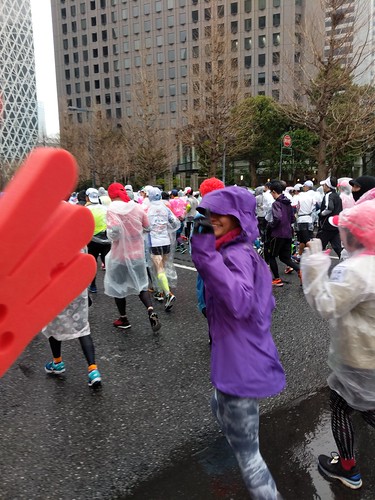
I saw Cali a few minutes after crossing the starting line. I would not see him again until the 14KM.
Like any other anxious and curious first-timer, I did my due diligence and spent hours reading about others’ personal marathon experiences online. What most experiences seemed to recount was that the first 5 to 10 KMs of the race breezed by unnoticed. That the “real” (?) marathon starts at 32 KM. I totally get why people would feel about it that way – the real work starts when your body wears down.
So, I set an intention. My intention was that I wouldn’t let these external notions of how a marathon is run affect me. I would run my first marathon my way.
When I saw the 1 KM mark, I thought, well that was a nice warm-up. 41 KM to go! I made a mental note to start counting down the kilometers, but I was really doing that to distract myself from the mammoth of a task ahead. So I kept anchoring back to my intention. I would treat this race with mindfulness – by tuning to my internal disposition rather than the external, e.g. looking out for the next water station or the next distance marker.
5 to 10 KM
I’m glad I refocused away from distraction early on in the race. I noticed that my pace gained consistency. There was no difficulty in breathing. The tension that I usually start feeling after running for an hour during training was nowhere to be felt. Maybe it was stress management finally working to my advantage, or maybe it was adrenaline.
View this post on Instagram
Tokyo Marathon 2019 #tokyomarathon #tokyomarathon2019 #tokyo #marathon #orangebox
The rain pretty much kept pouring down without remorse. Winds started to pick up. My body had just started to warm up. At 10 KM, I was 20 minutes behind my target time. I made a small goal adjustment of sprinting for the next kilometer or so.
14 KM – the 20-minute potty break
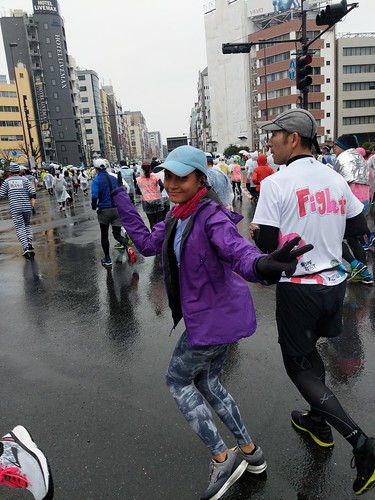
For those who really, really needed to go – me included – portalets and public restrooms were everywhere! You just had to plan when and where to take a break and make a plan to make up for the time you will lose from queueing up. I will tell you that there was a queue in every portalet. No exceptions.
I assumed (wrongly) about where these portalets would be placed. I assumed they would be right on the course, but that wasn’t the case. Most times they were placed on a side street parallel or intersecting the race course. To access them, you had to exit the race course and take a turn to another street and start lining up there. Distances markers were placed at every portalet corner so you knew how off course it was. This was really helpful for obvious reasons. I’ve seen a portalet as near as 300 meters up to 1 KM from the course.
I formed a potty break strategy upon noticing these variables. I planned to take a portalet stop when I find the next one that was not more than 300 meters from the course, regardless of the queue. I finally found my break spot at 14 KM.
At this portalet, specifically, the men’s queue was longer. But it moved faster than the women’s. If you didn’t mind, no one would stop you from using men’s portalets. It would save you a few precious minutes.
I had my period during the marathon so it was part of my plan to stop once and take a refresher (aka change my pads!). It took sooo long – about 20 minutes – to wait for my turn. Cali eventually found me in line. He could tell how anxious I was to just get the potty break over with. But it was a necessary task. My hygiene and comfort for the next kilometers would be in jeopardy if I didn’t change.

With a quick goodbye, Cali and I parted again. I picked up my pace for the next 3 or 5 KMs before going back to my steady 6:30 – 6:45/KM pace at around 20 KM. I was still feeling pretty strong and comfortable at this point. I did a mental check – I was still not bonking and there were no bad feelings. I could really do this!
21 KM
Safe to say that I’ve completely lost track of time at this point. If not for the timer BMW cars parked along the race course, I wouldn’t know what time it was. Time was a concern but it wasn’t my number one concern. I programmed my watch face to show distance and pace, so whenever I looked at it, I never really knew the time.
The 21 KM distance was marked by a “Half-way point” totem. Most people stopped here to take pictures.
I was now very conscious of the “squish” sound my shoes made every time they hit the wet the ground. I wasn’t annoyed nor happy about it then, but a funny thought came – how furious I’d have been if they got wet during my training days! But during the race I didn’t seem to mind at all. The Brooks Levitate 2 that I trained with and wore to the race proved to be a great companion. It was of knit material but it amazingly didn’t feel heavy after sucking up all the water. I paid attention to any toe blisters, thigh or bra strap chafing – none!
View this post on Instagram
A slightly bleak (yet still beautiful) race day. Credits to @22chisato
My strategy had been to take a Gu gel (every 40 mins) and 2 cups of water and 2 cups of Pocari sweat (every 3 KM). This worked perfectly. I was eventually running up to 30 KM at a steady pace. It helped to have a smile on the whole time. I don’t believe in smiling through the pain. There should be no pain!
32 KM
Passing the 32 KM was one of the best feelings during the race. Or ever.
I started feeling discomfort on the arches of my feet at around 31 KM. I wasn’t new to this discomfort because I have previously run into this while running my 32 KM long run. When I started feeling it during the race, all I could do was smile and say, “Well, hello there, old friend! We need to strengthen you more next time!” I happily accepted the fact that the lower body was really due to get tired at this point. I doubled up on my water and Pocari Sweat intake while still keeping to my 40 min Gu breaks. The pain receded eventually. I repeated this practice for the next 10 KMs and it always seemed to hold up.
Passing the 32 KM was one of the best feelings during the race. Or ever. Is it weird that I felt more accomplished passing 32 KM than finishing at 42 KM?
Every step that I took after the 32 KM mark became the farthest I’ve ever run. The remaining 10.195 KM that I had to cover was a celebration of the fact that I am capable of pushing my limits further.
38 KM
The 38 KM mark was an iconic point because it passed the Shiba Park and the Tokyo Tower. It wasn’t the deserted park where I had my shakeout run anymore. It looked livelier despite the gray skies. It must be the crowds cheering on both sides. One of the girls from Lululemon held out a big sign, “You can do it, stranger!” It felt so impersonal yet weirdly calming.
View this post on Instagram
Passing through Shiba Park. Credits to @sub3travel
I took the next 5 KM in stride, taking a 20 to 30-sec full stop at every water station to do squats, stretch my ankles and calves, do forward folds, and a do a fun round of standing Vinyasas. Everytime I finished a Vinyasa and looked up to the sky in a finishing prayer, I immediately felt refreshed. The stretches helped a lot to release tension at this point.
I noticed common mistakes tired runners made. One was to stretch the muscles or flex the joints that hurt without considering the areas around that were most likely what’s causing the pain. I couldn’t thank yoga and posture alignment more. A continuous yoga practice makes you more tuned in down to the smallest muscles and understand the body as a system. I still have A LOT to learn about my body, but I gave myself a proverbial pat on the back for applying learnings from yoga practice even under pressure.
I picked my pace after doing my 20-30 sec full stops. This became the ritual for the last 5 KMs. The rain hadn’t stopped, and the foot arch pain that I’d started feeling at 30 KM still resurfaced. I took my last Gu at 39 KM. I really love the Chocolate variant! I could eat it all day (I wouldn’t).
42 KM
Uneven cobblestone covered the last KM up to Tokyo Station finish line. I even saw Cali again!

The finish line crossing was crowded (yet organized) and unceremonious. But that did nothing to dampen the feeling of accomplishment. I had finished my first marathon!
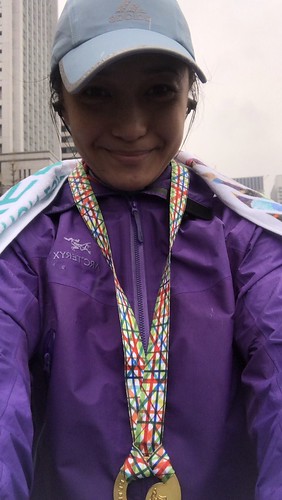
View this post on Instagram
Footnote: I Lost My Security Wristband…
I lost my security wristband a day before the race. Good heavens losing the wristband did not mean disqualification. All I had to do was look for the security gate on the day of the race, and, given a valid reason, they replaced it for me.
Tip: If you are to do this race and you end up also losing yours, do not make the effort of going back to the Expo to claim another one. They will not issue you a new one. They will only issue a replacement on the day of the race.
Step 1: On the day of the race, go to the security gate at least 10 minutes before the gates are scheduled to open. In 2019 it was at Gate 3. Present your case to an event usher or volunteer right away. Do not waste time by blindly following the queue at the gates; you’re most likely following the queue headed for security. Security will just turn you away without a wristband.
Step 2: Show your confirmation slip at the wristband replacement desk personell. There was no line yet when I arrived, but I could tell that others lost their wristbands too by the confused faces of people approaching the desk.
Step 3: If your reason is valid, i.e. you lost or broke it, they will give you a replacement. It took me no less than 10 minutes to get my new wristband.
More Photos
